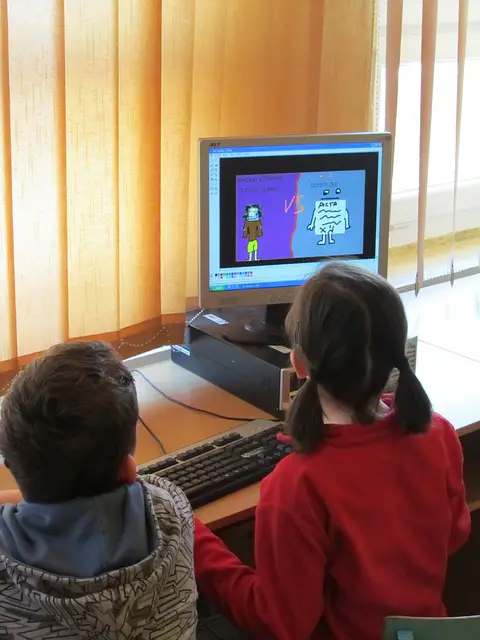Unraveling Down Syndrome Trisomy and Its Implications

Down syndrome, also known as trisomy 21, is a genetic disorder characterized by the presence of an extra copy of chromosome 21 in the cells of an individual. This additional genetic material leads to a unique set of physical characteristics, developmental delays, and medical conditions associated with the condition. Trisomy 21 is the most common chromosomal abnormality observed in humans, occurring in approximately 1 in every 700 births worldwide. Let’s delve deeper into the nature of trisomy 21 and its implications for individuals with Down syndrome.
Unraveling Down Syndrome Trisomy and Its Implications

Trisomy 21: The Genetic Basis of Down Syndrome
Trisomy 21 occurs as a result of an error in cell division during the formation of reproductive cells (gametes) or early fetal development. In the majority of cases, approximately 95%, Down syndrome is caused by a type of chromosomal nondisjunction known as meiotic nondisjunction. This occurs when the chromosomes fail to separate properly during the formation of egg cells (oocytes) in the mother’s ovaries or sperm cells (spermatozoa) in the father’s testes. As a result, an egg or sperm with an extra copy of chromosome 21 is produced.
When fertilization occurs between a normal gamete and an abnormal gamete carrying the extra chromosome 21, the resulting embryo inherits three copies of chromosome 21 instead of the typical two. This additional genetic material disrupts the normal developmental processes and leads to the characteristic features of Down syndrome.
Implications of Trisomy 21 for Individuals with Down Syndrome
Trisomy 21 has wide-ranging implications for the physical, cognitive, and medical health of individuals with Down syndrome. Some key implications include:
- Physical Characteristics: Individuals with Down syndrome often exhibit distinct physical features, including almond-shaped eyes, a flat nasal bridge, a small mouth with a protruding tongue, and low muscle tone (hypotonia). These physical characteristics may vary in severity among individuals but are often recognizable and characteristic of the condition.
- Developmental Delays: Trisomy 21 is associated with varying degrees of developmental delays, including intellectual disability, delayed milestones (such as sitting, crawling, and walking), and speech and language delays. These delays may impact cognitive functioning, learning abilities, and social communication skills.
- Medical Conditions: Individuals with Down syndrome are at increased risk for certain medical conditions, including congenital heart defects, hearing loss, vision problems, and thyroid dysfunction (hypothyroidism). Regular medical screenings and interventions are essential for managing these medical conditions and promoting overall health and well-being.
Support and Intervention for Individuals with Down Syndrome
While trisomy 21 presents unique challenges, early intervention therapies, educational support, and comprehensive medical care can significantly improve outcomes and enhance quality of life for individuals with Down syndrome. Therapies such as physical therapy, occupational therapy, speech therapy, and early childhood education address the developmental needs of individuals with Down syndrome and promote skill development and independence. Inclusive education, assistive technology, and medical management strategies are also crucial components of support for individuals with Down syndrome.
Here’s a breakdown of symptoms commonly associated with Down syndrome and corresponding therapies that can help individuals with the condition:
Symptoms of Down Syndrome:
- Distinct Physical Features:
- Almond-shaped eyes
- Flat nasal bridge
- Small mouth with a protruding tongue
- Low muscle tone (hypotonia)
- Short stature
- Joint laxity
- Developmental Delays:
- Intellectual disability (ranging from mild to moderate)
- Delayed milestones (e.g., sitting, crawling, walking)
- Speech and language delays
- Medical Conditions:
- Congenital heart defects (approximately 50% of cases)
- Hearing loss
- Vision problems
- Thyroid dysfunction (hypothyroidism)
Best Therapies for Down Syndrome:
- Physical Therapy (PT):
- Exercises to improve muscle strength, tone, and coordination.
- Activities to enhance gross motor skills such as walking, running, and jumping.
- Balance and coordination exercises to improve stability and prevent falls.
- Adaptive equipment and assistive devices to support mobility and independence.
- Occupational Therapy (OT):
- Fine motor skill development through activities such as drawing, painting, and handwriting.
- Activities to promote independence in self-care tasks, such as dressing, feeding, and grooming.
- Sensory integration therapy to address sensory processing challenges.
- Training in activities of daily living (ADLs) and adaptive techniques to improve functional independence.
- Speech Therapy (ST):
- Articulation exercises to improve speech clarity and pronunciation.
- Language development activities to expand vocabulary and improve comprehension.
- Social communication skills training to enhance interactions with peers and adults.
- Alternative communication methods such as sign language or augmentative and alternative communication (AAC) devices.
- Early Childhood Education:
- Structured learning activities to promote cognitive development and academic readiness.
- Socialization opportunities to facilitate peer interactions and friendship development.
- Individualized education plans (IEPs) with goals tailored to the child’s specific needs and abilities.
- Inclusive classroom environments that accommodate diverse learning styles and abilities.
- Inclusive Education:
- Integration of students with Down syndrome into mainstream classrooms alongside their typically developing peers.
- Peer-mediated interventions to promote social inclusion and positive peer relationships.
- Collaboration between special education teachers, general education teachers, and support staff to create inclusive learning environments.
- Assistive Technology (AT):
- Communication devices and software applications to support speech and language development.
- Adaptive equipment such as modified keyboards, writing aids, and page-turning devices.
- Educational software and apps designed to accommodate diverse learning needs and styles.
- Environmental control systems to promote independence in home and school settings.
- Medical Management:
- Regular cardiac evaluations and monitoring for congenital heart defects.
- Audiological assessments and interventions for hearing loss, including hearing aids or cochlear implants.
- Ophthalmologic evaluations and corrective measures for vision impairments.
- Thyroid function tests and hormone replacement therapy to manage thyroid dysfunction.
These therapies and interventions aim to address the unique needs and challenges associated with Down syndrome, promoting development, independence, and overall well-being for individuals with the condition. By providing comprehensive support across physical, cognitive, social, and medical domains, individuals with Down syndrome can thrive and lead fulfilling lives, enriching their communities in the process.
Conclusion
Trisomy 21, or the presence of an extra copy of chromosome 21, is the underlying genetic abnormality responsible for Down syndrome. This genetic condition gives rise to the characteristic features, developmental delays, and medical conditions associated with the condition. By understanding the genetic basis of Down syndrome and its implications, we can better support individuals with the condition and promote their health, development, and overall well-being. Through early intervention, inclusive education, and comprehensive medical care, individuals with Down syndrome can thrive and lead fulfilling lives, enriching the communities in which they live.







